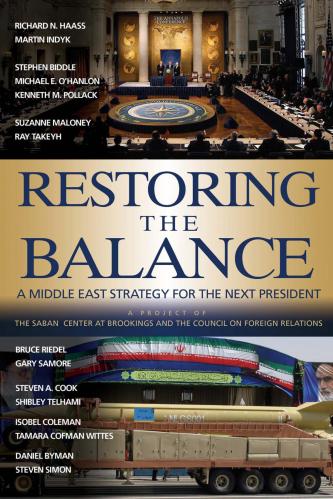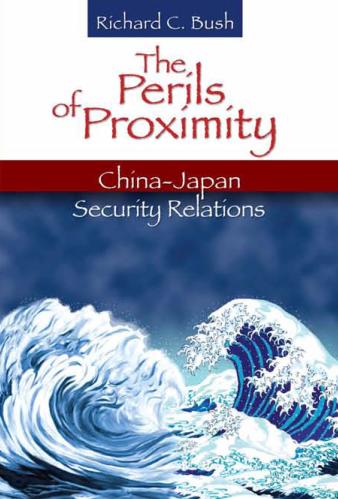Content from the Brookings-Tsinghua Public Policy Center is now archived. Since October 1, 2020, Brookings has maintained a limited partnership with Tsinghua University School of Public Policy and Management that is intended to facilitate jointly organized dialogues, meetings, and/or events.
Despite the attention on the South China Sea, the greatest risk for maritime conflict between the United States and China is in the East China Sea, writes Ryan Hass. This piece originally appeared in China-US Focus.
Recent press reporting of continuing Chinese construction activities at its reclaimed islands in the South China Sea has revived focus on maritime issues. These latest stories layer on top of a large body of commentary in recent years about the risk of a great power clash between the United States and China in the South China Sea.
During this same period, the maritime dispute between China and Japan in the East China Sea garnered less attention. Unlike the South China Sea, there were no new islands being constructed out of sand, no high-stakes arbitral rulings, and no sharp policy debates in Washington that spilled out into the press. Despite the lower profile, the dispute in the East China Sea may carry greater risk of drawing the United States into conflict with China than the various disputes in the South China Sea. Here’s why:
First, the situation in the South China Sea is and will remain at a stalemate. As Singaporean official Bilahari Kausikan has observed, Washington cannot force Beijing to abandon the artificial islands it has constructed or stop China from deploying military assets on them without risking a military conflict. By the same standard, China cannot stop the United States from operating in the area without risking a major conflict that would expose Chinese forces to significant risk of defeat and potentially result in the rapid destruction of its artificial islands. In other words, neither roll-back nor exclusion are policy options that attract serious consideration by governments in Beijing or Washington.
Second, the geopolitical temperature on the South China Sea has gone down considerably over the past year. Reasons for this include: President Trump’s de-emphasis of the issue as an element of the U.S.-China relationship; Beijing’s prioritization of regional economic integration via the Belt and Road Initiative; and Southeast Asian countries’ growing wariness of poking China on the South China Sea and preference instead for focusing on regional connectivity and negotiations toward a China-ASEAN Code of Conduct.
Third, risk-mitigation measures are more mature in the South China Sea than the East China Sea. Whereas the United States and China have implemented protocols to prevent unsafe and unprofessional encounters at sea or in the air and gained experience managing incidents when they arise, the same types of risk management mechanisms are not in place between China and Japan in the East China Sea.
Fourth, and relatedly, the frequency of close-in encounters between Chinese and Japanese ships and aircraft in the East China Sea is intensifying. This trend likely will accelerate as China and Japan each follow through on plans to introduce more air and maritime capabilities to defend their contested claims in the East China Sea.
Fifth, China and Japan have a hardened view of each other as strategic competitors. Events in the East China Sea take on heightened significance because the dispute is perceived in both countries as a proxy for how they will relate to each other as Asian powers. On top of that, recent history has demonstrated that incidents in the East China Sea can activate public emotions rapidly and, in so doing, limit political space for leaders in Beijing and Tokyo to de-escalate.
Against this backdrop, the United States has three top national interests in the South and East China Seas that it must protect: (1) uphold the global credibility of U.S. alliance commitments; (2) preserve unimpeded freedom of navigation and overflight for civilian and military assets; and (3) maintain sufficient stability to enable constructive relations with China.
As a matter of global policy, the United States does not take a position on various claims, does not have a preferred outcome to the disputes, and typically does not seek to mediate. Rather, U.S. strategy concentrates on protecting allies, keeping the sea and air space open, and creating conditions that are conducive for claimants to manage and peacefully resolve disputes over time.
Based on these narrow national interests, the two most likely U.S.-China conflict-precipitating scenarios in the South and East China Seas would be a Chinese clash with a U.S. ally that triggered a U.S. alliance commitment, or a Chinese attempt to deny access to aircraft or vessels operating in accordance with customary international law.
Any attempt by China to close down waterways or airspace from lawful civilian or military activities would risk triggering a sharp international response, potentially leading to military conflict. Under present conditions, Beijing likely would not assume such risk.
The other scenario, which is the most proximate risk, would be an event that implicates U.S. alliance commitments. Among the various claimants with whom China has a maritime dispute, the United States maintains alliance relationships with the Philippines and Japan.
Manila and Beijing currently enjoy warm relations, which mitigates risk of a clash. The Philippines also has limited operational presence in waters and airspace in the South China Sea, which reduces the potential of inadvertent incidents. And Washington has signaled clearly and credibly to Beijing that any Chinese attempt to forcibly seize features claimed by Manila could risk implicating U.S. alliance commitments. None of this precludes the possibility that Beijing could attempt to forcibly seize Philippines-claimed features, but it limits the likelihood of such a scenario.
There is greater risk of an unintended incident between Chinese and Japanese forces operating in the East China Sea. This is due to the frequency of close-in operations involving Chinese and Japanese assets, the absence of mature risk-reduction mechanisms, and the lack of consensus between Beijing and Tokyo on lines of demarcation and acceptable behaviors in areas around the Senkaku Islands.
Given these factors, there is non-negligible risk of an unintended collision in air or at sea that could trigger rapid escalation and quickly implicate U.S. alliance commitments.
To be clear, conflict is far from preordained in the South or East China Seas. With steady professionalism, wise leadership, and calm responses to incidents when they arise, conflict can and should be averted. Nevertheless, when evaluating risk in maritime East Asia, it would be prudent to keep an unblinking focus on both the South and East China Seas, with clear identification of what national interests the United States must protect, and awareness of the relative risks in both domains. Washington also would be wise to encourage Beijing and Tokyo to intensify efforts to establish protocols for mitigating risk of unintended incidents and develop active channels for managing incidents when they arise.









Commentary
Op-edRisk of U.S.-China confrontation in the East China Sea
December 20, 2017